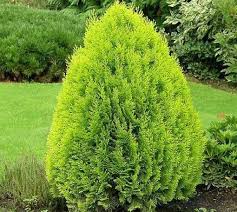The Fashion Style of the Chinese Imperial Court Across Dynasties

Fashion has always been a significant element of the Chinese imperial court, deeply embedded in the culture, traditions, and authority of the ruling dynasties. For centuries, the clothing of emperors, empresses, and courtiers served not only as a reflection of their personal taste but also as a symbol of power, status, and identity. The fashion styles in the imperial court were constantly evolving, influenced by cultural shifts, political changes, and advancements in textile production.
This article explores the fashion styles of the Chinese royal family and the imperial court throughout various dynasties, focusing on the different sartorial trends, the symbolic meaning behind them, and the evolution of court attire from the early dynasties to the Qing Dynasty.
1. The Importance of Fashion in the Imperial Court
Fashion in the imperial court was more than just about beauty and style—it was deeply tied to social hierarchy, power, and politics. Garments were used as a form of social control, with strict regulations governing who could wear what, based on one’s rank and role in society.
Clothing was a means of symbolizing the emperor’s connection to Heaven, the divine right to rule, and the harmony between the emperor and the people. The emperor’s attire was often ornate, intricate, and rich in symbolism, while court officials and members of the nobility were required to follow specific codes of dress to reflect their positions in the hierarchy. The colors, materials, and even the shape of the garments were all carefully selected for their meaning and connection to the emperor’s power and the broader cultural values of the time.
2. The Han Dynasty (206 BCE – 220 CE)
The Han Dynasty, which is often regarded as a golden age in Chinese history, saw the emergence of many aspects of Chinese court fashion that would endure throughout the centuries. The clothing of the imperial family and the court during this period was characterized by simplicity, elegance, and practicality, reflecting the Confucian principles of moderation.
A. The Emperor’s Attire
During the Han Dynasty, the emperor’s attire was designed to reflect his divine status as the Son of Heaven. The emperor’s robe, known as the “dragon robe” (龙袍, lóng páo), was often made from luxurious fabrics such as silk and decorated with intricate patterns. The dragon, a symbol of imperial power, was embroidered onto the robe, signifying the emperor’s control over the natural world.
The emperor’s attire also featured symbolic colors, such as yellow, which was reserved for the emperor alone and considered the most auspicious color. The emperor’s hat, known as the “diadem” (冕, miǎn), was a ceremonial headpiece worn during state rituals and was often made of silk and gold. The attire of the emperor during the Han Dynasty emphasized both elegance and authority, with an emphasis on the connection between the human realm and the heavens.
B. Court Officials and Nobility
Court officials in the Han Dynasty also had distinct clothing that reflected their rank. Civil officials wore robes made from fine fabrics and were distinguished by the color and design of their garments, such as the use of specific patterns or the number of buttons on their robes. Military officials wore armor-like robes made of stiffer material, symbolizing their role in the defense of the empire.
3. The Tang Dynasty (618 – 907 CE)
The Tang Dynasty is often considered one of the most culturally prosperous periods in Chinese history, and the fashion of the imperial court during this time was known for its opulence, vibrant colors, and intricate designs. The fashion of the Tang court was influenced by the Silk Road and the exchange of cultural ideas with Central Asia, Persia, and the Indian subcontinent.
A. The Emperor’s Attire
The emperor’s clothing in the Tang Dynasty was characterized by its extravagant use of silk, gold thread, and elaborate embroidery. The emperor wore long, flowing robes adorned with dragons, clouds, and other celestial motifs, which symbolized his divine right to rule. The colors of the robes were also significant, with red, yellow, and gold being the most prestigious and closely associated with the emperor’s status.
The emperor also wore a special “imperial crown” (冕旒, miǎn liú), a tall, ornate headpiece made from precious metals and adorned with pearls, jade, and other luxurious materials. This crown symbolized the emperor’s power over both the physical and spiritual realms and was an essential part of his ceremonial attire.
B. Court Attire and the Influence of Foreign Cultures
Tang court attire was greatly influenced by the fashion trends of neighboring countries, particularly the Central Asian nomadic tribes and the Persian Empire. The attire of both men and women in the Tang court often featured flowing sleeves, high collars, and the use of bright, bold colors, including purple, blue, and green.
The influence of the Silk Road trade is evident in the garments worn by the court, which often incorporated luxurious fabrics such as brocades and satins from Persia, India, and the Byzantine Empire. These foreign influences led to the development of a more cosmopolitan style in the Tang Dynasty, where court attire was not only a reflection of imperial power but also a symbol of China’s position as a cultural and commercial hub.
4. The Song Dynasty (960 – 1279 CE)
The Song Dynasty, which saw a shift toward greater emphasis on administrative efficiency and cultural development, had a more refined and elegant approach to court fashion compared to the flamboyant styles of the Tang Dynasty. During this period, there was a shift from grandiose displays of wealth to a focus on simplicity and sophistication.
A. The Emperor’s Robes
Emperors in the Song Dynasty wore robes that were often simpler in design but still rich in symbolism. The robes were typically made from silk and decorated with subtle motifs, such as the phoenix or the dragon. The dragon continued to be an important symbol of imperial power, but the designs were less extravagant compared to the previous dynasties.
The Song emperors also adopted a more understated approach to their ceremonial attire. The robes featured muted colors, such as soft yellows and blues, and were less adorned with gold and jewels. This style reflected the Song Dynasty’s focus on elegance and restraint rather than excess.
B. Court Attire for Officials
In the Song Dynasty, the clothing of officials became more standardized, with distinct robes and accessories denoting one’s rank within the bureaucracy. Civil officials wore long robes made of silk, often in dark colors such as blue and brown. Military officials, on the other hand, wore armor-inspired robes in shades of black and gray. The Song court was more organized in terms of its hierarchy, and the clothing was designed to reflect this structured approach to governance.
5. The Qing Dynasty (1644 – 1912 CE)
The Qing Dynasty, the last imperial dynasty of China, brought about a major shift in the fashion of the imperial court. The ruling Manchu people introduced their own distinct clothing styles, which differed significantly from those of the Han Chinese, who had ruled during previous dynasties. The Qing court’s fashion was marked by strict rules and regulations regarding attire, and it remained largely unchanged throughout the dynasty’s reign.
A. The Emperor’s Clothing
The emperor of the Qing Dynasty wore elaborate robes that were made of silk and decorated with intricate designs, including the famous dragon robes (龙袍, lóng páo), which were richly embroidered with dragons and other auspicious symbols. The dragon robe was not just an ornamental garment—it symbolized the emperor’s role as the ruler of all China and his connection to the heavenly mandate.
The emperor’s robes also featured a five-clawed dragon, a symbol of supreme imperial authority, and the color yellow continued to be reserved exclusively for the emperor. The emperor’s hat, known as the yellow crown, was a distinctive part of his attire and was worn during ceremonies and state events.
B. Women’s Fashion in the Qing Court
Empresses and female court members in the Qing Dynasty wore long robes made of silk, often decorated with floral or animal patterns. Their clothing was typically more elaborate than that of male court officials, with the addition of silk sashes, jewelry, and other accessories. The hairstyles of the women at court were equally intricate, with women often wearing elaborate headdresses made of gold and jade, as well as ornamental pins and combs.
6. Conclusion
The fashion of the Chinese imperial court has evolved significantly throughout the dynasties, reflecting the changing political, cultural, and social values of each era. From the simple and elegant robes of the Han Dynasty to the opulent and cosmopolitan styles of the Tang Dynasty, the court fashion always symbolized the power and status of the emperor and his court.
In the Qing Dynasty, court fashion became more regulated, with strict rules governing what could be worn by different ranks in society. However, the underlying theme of imperial power and authority remained constant throughout all dynasties.
The evolution of fashion in the Chinese imperial court is a testament to China’s rich cultural heritage and the important role that clothing played in communicating imperial power, wealth, and identity. Today, many of these traditional garments continue to inspire modern Chinese fashion and are celebrated as symbols of China’s glorious past.

